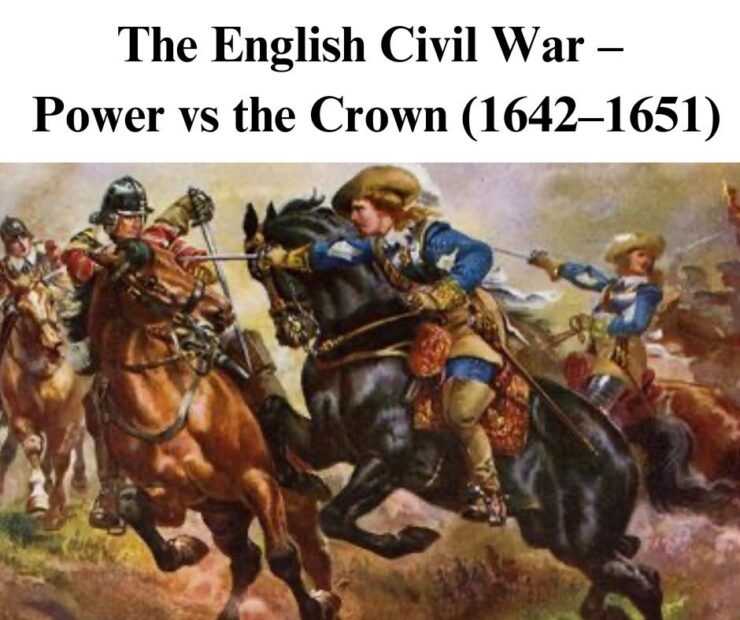
The English Civil War – Power vs the Crown (1642–1651)
The 17th century tore England apart.
The English Civil War wasn’t just a battle of armies— it was a battle of ideals, pitting the authority of the monarch against the rising power of Parliament.
The result would forever alter the British monarchy and plant the seeds of modern democracy.
What Caused the War?
•King Charles I ruled with absolute power, clashing with Parliament over taxation, religious reforms, and divine right.
•His dismissal of Parliament and introduction of controversial religious policies angered both Puritans and moderates.
•By 1642, tensions erupted into open conflict.
The Sides:
•Royalists (Cavaliers): Supported King Charles I.
•Parliamentarians (Roundheads): Led by Oliver Cromwell, demanded accountability and limited royal power.
Key Events:
•Fierce battles raged, including Marston Moor (1644) and Naseby (1645).
•In 1649, Charles I was captured, tried for treason, and executed — a shocking moment in world history.
•A republic, known as the Commonwealth of England, was declared, led by Cromwell.
Aftermath:
•England briefly became a republic until the monarchy was restored in 1660.
•While short-lived, the Civil War set a precedent: monarchs could no longer rule without the consent of the people.
Legacy:
•The Civil War introduced ideas of popular sovereignty, constitutional government, and accountable leadership.
•It paved the way for the Glorious Revolution and the modern British parliamentary system.
The English Civil War was a bloody struggle for power —but its outcome helped shape the freedoms we value today.
